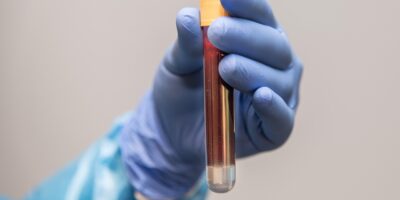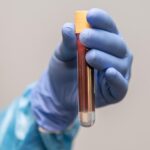The disruption of metabolic pathways responsible for the reabsorption of Bile Acids, (BA) secreted by the liver have been shown to be the cause for various liver disorders, including Non-alcoholic fatty liver disease (NAFLD), diabetes, and inflammatory bowel disease. FGF19 is a digestion protein which is naturally produced by the human digestive system, whose purpose is to induce bile acid absorption. Because of this, it has previously been identified as a potential therapeutic for liver diseases related to the liver Bile Acid pathway. However, long term treatment with FGF19 has been found to cause liver fibrosis and cancer, casting it outside of the realm of therapeutic usefulness, until now.
A recent research study led by Lu Shi and Tiantian Zhao’s team, may have found a workaround to this issue. Recently, they synthesized an artificial variant of FGF19: FGF19ΔKLB, which in laboratory mice trials, have been proven to have the same effects on BA synthesis, without the cancer-causing side effects. Three mice model populations were used in the research: ANIT-induced mice, lab mice administered with a specific chemical compound which induces liver cholestasis, db/db mice, genetically engineered to have diabetes, and MDR2-/- mice, which are genetically engineered to have disrupted MDR2 proteins, which results in impaired bile production and liver cholestasis.
The experiments were designed to determine if A. FGF19ΔKLB retained its effectiveness at treating liver disorders after being modified from the original FGF19WT, and B. if FGF19ΔKLB was safe for prolonged treatment with the mice models.
Before any tests on mice were performed, Shi and Zhao’s team used HepG2 cells to confirm if FGF19ΔKLB retained its effectiveness. HepG2 cells, being liver cancer cells grown from culture, release certain enzymes (Cyp7a1 and Cyp27a1) which are associated with liver BA production. HepG2 cells were treated with both FGF9ΔKLB and FGF19WT, and both were found to equally inhibit the production of these enzymes, supporting that FGF19ΔKLB was not compromised in function.
The ANIT-induced mice and MDR2-/- mice were treated with either FGF19ΔKLB or FGF19WT for six days. Then, the effectiveness was assessed using Hepatic bile acid readings (Testing for certain enzymes in the liver to determine function), serum markers (Antibodies used to determine various physiological processes of the body, through blood sample), and analysis of liver tissue by dissection staining and microscope inspection. Both populations of mice demonstrated a significant reduction in Bile acid and Serum total bile acid levels, comparable to that of FGF19WT. Haptic bile acid readings determined that the levels of Cyp7a1 mRNA (enzyme responsible for limiting conventional bile production), and Cyp27a1 mRNA (enzyme responsible for alternate bile production pathway) were disrupted by FGF19ΔKLB at a comparable rate to FGF19WT, which suggested to the researchers that such a modification to the protein did not compromise its function as a therapeutic.
Now with the efficacy of FGF19ΔKLB supported in the ANIT mice model, it was time for Shi and Zhao’s team to evaluate the safety of FGF19ΔKLB. To expedite the occurrence of side effects so the study could be completed within a reasonable time frame, db/db mice were used due to the fact that the db/db mice population shows the shortest latency and high tumor incidence of all the mice populations available to the research team. For 24 weeks, the db/db mice were treated, using an AAV-mediated delivery system (using a virus for the delivery of gene therapy) to express either the FGF19ΔKLB or FGF19WT proteins. After the 24 weeks had elapsed, hepatic bile readings and visible tumors were assessed between the two populations. The results demonstrated that FGF19ΔKLB treatment did not induce tumor growth or fibrosis, which provided promising results for its therapeutic potential.
“These findings suggested that FGF19ΔKLB may be a potential therapeutic candidate for cholestatic liver disease.”
In conclusion, the development of FGF19ΔKLB, a synthetically produced analog of the protein FGF19 by Lu Shi and Tiantian Zhao’s team shows promise in potentially being a therapeutic treatment option for liver disorders caused by Bile Acid dysregulation supported by its effectiveness in mice models, with the lack of harmful side effects characteristic of the FGF19 protein. This is a significant discovery thanks to modern biotechnology techniques, and further research may be done to confirm the effectiveness of FGF19ΔKLB within different types of model organisms with more trials.
Journal Cited
Shi, L., Zhao, T., Huang, L., Pan, X., Wu, T., Feng, X., Chen, T., Wu, J., & Niu, J. (2023). Engineered FGF19ΔKLB protects against intrahepatic cholestatic liver injury in anit-induced and MDR2-/- mice model. BMC Biotechnology, 23(1). https://doi.org/10.1186/s12896-023-00810-9








